|
New Marine Archaeology Discoveries made in 2020 will appear below
as we become aware of them, though there are verey few reports this year so far….
“From the seabed figures of an ancient cult”
September 01 2020, Deccan Herald, India
“In 1972, in one of the early finds of marine archaeology, researchers discovered a trove of clay figurines on the seabed off the coast of Israel.
The figurines – hundreds of them, accompanied by ceramic jars – were assumed to be the remains of a Phoenician shipwreck that had rested under the Mediterranean for 2,500 years.
The artifacts were never fully analysed in a scientific study, and were filed away and mostly forgotten for decades.
But a new analysis by Meir Edrey, an archaeologist at the Leon Recanati Institute for Maritime Studies at the University of Haifa in Israel, and his colleagues indicates that the items were not deposited all at once in a wreck.
Rather, they accumulated over roughly 400 years, between the 7th and 3rd centuries B.C., in a series of votive offerings, as part of a cult devoted to seafaring and fertility.
“These figurines, the majority of them, display attributes related to fertility, to childbearing and to pregnancy,” Edrey said.”
[Read The Full Story]
[Great story from The Deccan Herald in India regarding these figurines found in the Mediterranean. That there were many aspects of The Goddess, given many names by various ancient cultures, is well known, and pregnancy and fertility were the most important aspect of The Goddess to these ancient cultures.
It’s well worth a visit to read the full story and see the image of some of the figurines discovered by marine archaeologists – Ed.]
“Archaeologists found at the bottom of the Nile, the mythical city of the Egyptian pharaohs”
June 01 2020, The Times Hub, India
“As evidenced by ancient records, for example, the same Herodotus, the Greek heroes during the Trojan war tried to find refuge in Egypt but was unable to get to the Pharaoh for guarding the city of Tanis.
Subsequently, traces of this unique settlement was virtually erased from the maps, but because specialists have recognized the stories of the legends or myths.
However, mathematician Frank Goddio managed to locate a city on a 7-kilometer depth near Alexandria three decades ago. The French specialist it took years to prove the reality of their version and bring archaeologists to the study.
The scientist used the technology of electromagnetic drag-and-drop developing with its help, the complicated model of the river Nile, which was revealed very unusual features of its structure.”
[Read The Full Story]
[Great story from The Times Hub in India, but the English translation leaves much to be desired! Also Frank Goddio is a well-known marine archaeologist, so why he is described as simply ‘a mathematician’ is confusing to say the least. Even so it’s well worth a visit to read the full story and see the image of some of the remains discovered – Picti]
“Submerged buildings found in ancient city and modern luxury resort of Crete”
February 12 2020, Tornos News, Greece
“Submerged building complexes as well as ancient quarries, chiseled bollards, a loading platform, ships’ ballast, anchors, accidental rejects and signs of a Byzantine shipwreck were discovered by underwater research in ancient Oloundas and the harbor of Ierapetra in Crete island of Greece.
According to the Greek Ministry of Culture and Sports, that submerged archaeological evidence in the area and urban center of ancient Oloundas, today’s luxury Elounda resort on Crete, has been investigated by an underwater research team from the Ephorate of Underwater Antiquities and a team of geophysicists from the Laboratory of Satellite Remote Sensing of the Institute of Mediterranean Studies.
The research, carried out last October in much of Elounda Bay, involved volunteer divers and scientists of other specialties. “
[Read The Full Story]
[Great story from Tornos News! There is obviously much more down there to explore and be discovered. It’s well worth a visit to read the full story and see the amazing images of the finds and the marine archaeologists who discovered them – Picti]

Marine Archaeology Discoveries made in 2019
are listed below …
“Return to the Antikythera shipwreck as underwater archaeology resumes”
Octber 06 2019, Neos Kosmos, Greece
“The underwater archaeological survey at the Antikythera shipwreck that has been suspended since 2017 will soon resume, according to an announcement on Friday by the Ekaterini Laskaridi Institution, which is supplying the research vessel ‘Typhoon’ for the needs of the project.
‘The aim of the archaeological survey that will start in the next few days is the recovery of antiquities, to update the mapping of the archaeological site and evaluate the condition of the shipwreck after two years’, said the statement.
The long-time director of the survey, Dr Angeliki Simosi, head of the Evia Antiquities Ephorate, will once again lead the mission, which includes a team of exceptional Greek scientists of various disciplines, including marine archaeologists, scuba divers, cameramen and a team of four deep-sea divers in the Greek coast guard Underwater Missions Unit.”
[Read The Full Story]
[Excellent news! Let us all hope they will continue to make more discoveries related to the Antikythera Mechanism. It’s not a long story but well worth a visit to read it, and follow the links – Polly]
“China’s NCHA announces two major archaeological achievementss”
August 07 2019, Global Times, China
“China’s National Culture Heritage Administration (NCHA) announced two important archaeological achievements at a conference on Tuesday.
According to the conference, the Nanhai I, a Song Dynasty (420-479) shipwreck discovered off the coast of South China’s Guangdong Province in 1987, has been named the best-preserved ancient shipwreck in China.
With a length of 22.95 meters and a width of 9.85 meters, the shipwreck’s hull remains relatively intact.
The archaeological team has recovered more than 180,000 cultural relics from the wreck, demonstrating the prosperous overseas trade system that existed in China during the Song Dynasty (960-1279).
Archaeological work on the Nanhai I has lasted for more than 30 years”
[Read The Full Story]
[It’s good to hear more about the discoveries being made by the long-term project run by China’s marine archaeologists at the Nanhai 1 site. The story is not a long one but well worth a visit to read it – Polly]
“Mysterious temple discovered in the ruins of
sunken ancient city”
July 26 2019, 9 News, Australia
“A mysterious destroyed temple has been discovered in the ruins of an ancient Egyptian city that sunk into the sea some 1200 years ago.
The sunken city of Heracleion – also dubbed the ‘Egyptian Atlantis’ – was lost in the waters off Egypt’s north coast for centuries until it was first uncovered in 2000.
Constant studies have been undertaken at the location since the discovery, with researchers recently uncovering the remains of a Greek temple and treasure-laden ships at the underwater site.
Bronze coins from the reign of King Ptolemy II (283 to 246 BC), ancient columns and 2000-year-old pottery were also among the astonishing new finds.
Heracleion was said to be Egypt’s main international trading port, but no trace of the lost city had been found until it was discovered in 2000 by the European Institute for Underwater Archaeology and Franck Goddio.
‘Its name was almost razed from the memory of mankind, only preserved in ancient classic texts and rare inscriptions found on land by archaeologists’, explained researchers.”
[Read The Full Story]
[What an excellent story from 9 News! The work of Franck Goddio and his team off the coast of Egypt in the Mediterranean is renowned amonst marine archaeologists as the high benchmark standard to be aimed at in all such underwater reserach.
It’s well worth a visit to read the full story and see the many great underwater photos and video of the marine archaeologists and the artifacts they are recovering from the sea floor – Ed.]
“Britain’s Atlantis: Evidence of Stone Age human activity
found beneath North Sea”
June ? 2019, The Independent, UK
“Archaeologists have found evidence of ancient human activity on Britain’s very own ‘Atlantis’.
Scientists investigating a drowned Stone Age landscape at the bottom of the North Sea have discovered two potential prehistoric settlement sites on the banks of a long-vanished ancient river.
It is the first time that an archaeological expedition has ever found such evidence far offshore under the huge body of water.
In the past, prehistoric artefacts have on occasions been trawled up by fishermen and found by oil exploration teams – but the seabed contexts they came from were never archaeologically assessed.
This time, the discoveries are part of a systematic archaeological survey.
The archaeologists – from Britain and Belgium – have found two highly significant stone artefacts in specific locations which were being deliberately investigated for ancient human activity.”
[Read The Full Story]
[A great story from The Independent. John has been saying for more than 20 years that evidence of ancient settlements are likely to be found underwater between UK and mainland Europe – if only they’d bother to look for them. He was dismissed as “Bonkers” by most of the mainstream archaeologists at the time in the mid-1990s.
Now they must wish they had listened to his unique insights much earlier. It’s worth a visit to read the full story and see how right John was all those years ago – Polly.]
“Underwater Fortress Found: Ancient Fort Linked to Bloody Biblical Battles Found Off Coast of Israel”
June 01 2019, Ancient Origins, Australia
“Underwater archaeology is helping to transform our knowledge of the ancient world.
In Israel, maritime archaeologists have discovered a 2,200-year-old Hellenistic fortress linked to biblical battles.
The discovery is helping us to understand Hellenistic military fortifications and strategies and the impact of rising sea levels on ancient communities.
The find was made at Tel Dor , which ‘overlooks the eastern Mediterranean on the southern Levantine coastline of Israel’, as the researchers wrote in the Journal of Maritime Archaeology.
It is now known as the beach of Kibbutz Nahsholim and is due south of the bustling city of Haifa.
There is a natural harbor there and that means that it was excellent for the anchorage of ships.
Tel Dor is a site that has revealed evidence of Phoenician, Hebrew, Roman, and Byzantine occupation and it has a long and often bloody history.
[Read The Full Story]
[What an intelligent opening sentence!. This is something John has been saying for the past 25 years and more, and the reason The Morien Institute has focussed on bringing marine archaeology to the attention of all our visitors. It’s worth a visit to read the full story and see the great underwater image of the diver and the remains of the fort – Polly.]
“Search for Cortés’ ships turns up 15th-century anchor
off Veracruz”
May 01 2019, Mexico News Daily, Mexico
“Could an anchor half buried in the ocean floor off Veracruz be part of the wreckage of one of the scuttled ships of conquistador Hernán Cortés?
The Spanish adventurer had two options in 1519: face mutiny or quell a rebellion by scuttling 10 of his 11 ships, which would give the crews no option but to move inland with him toward the heart of the Mexica empire.
He chose the latter option, which has led to a project whose goal is to locate the remains of Cortes’ fleet.
This week, that project, headed by archaeologist Roberto Junco Sánchez and anthropologist Chris Horrell, made its first significant find – an anchor dating back to the 15th century with wood still attached to it, identified as being a type of oak found only in northern Spain.
[Read The Full Story]
[Interesting find! There must be many, many more artigfacts to be discovered off the Mexico coast. It’s worth a visit to read the full story and see the underwater image of the diver and the anchor – Ed.]
“High-altitude divers find ritual relics”
April 02 2019, DiverNet, UK
“Divers have investigated a South American repository for offerings to the gods – in what they say is the first methodical archaeological excavation of a site in the world’s highest large lake.
The team found a range of valuable items at Khoa Reef, north of the Island of the Sun site in Bolivia’s Lake Titicaca.
The slightly saline ‘inland sea’, which lies in the Andes 3800m above sea level, was revered by early Andean people as the birthplace of the sun.
They once used the island, which today lies at depths of 5m or more, for their ceremonies to propitiate the gods.
Discoveries included ceramic cat-styled incense-burners and metal, shell and stone ornaments, including a lapis-lazuli puma, a turquoise pendant and gold medallions engraved with a ray-faced god.”
[Read The Full Story]
[Really interesting story on DiverNet! Votive offerings into lakes are found worldwide, due often because the ancient peoples who made tose offering regarding such bodiesa of water as ‘gateways to the underworld’.
It’s worth a visit to read the full story and see the great underwater image of a diver holding a find – Ed.]
“‘Incredibly rare’ find in Western Isles prehistoric forest”
January 16 2019, BBC News, UK
“Archaeologists have found evidence of early human activity at a submerged prehistoric forest in the Western Isles.
Lionacleit in Benbecula is one of more than 20 recorded sites of ancient woodland that once grew in the islands.
The remains included an early butchery site and stone tools used for preparing food.
Archaeologists have described the discoveries at Lionacleit as ‘extra special’.
They found the remains of the area where animals had been butchered for food during studies of the site last year.
Bone was also found with a piece of quartz from a stone tool and a quern stone, which was used for grinding food.”
[Read The Full Story]
[Great story from BBC News! The more we learn about what ancient peoples hunted, gathered and ate the better informed we become of ancient sophisticated societies, and this story adds to our knowledge of how, when and where that occurred.
Well worth a visit to read the full story – Ed.]
“Unearthing the ancient traces of China-Saudi Arabia exchanges”
January 18 2019, CGTN, China
“China and Saudi Arabia recently unveiled the achievements of their joint archeological exploration at the ruins of the al Serrian port, an important pilgrim-trade port in ancient times connecting the East and West.
The ruins of the port are located by the Red Sea, the southwestern part of the Arabian Peninsula.
It was deserted for unknown reasons and then covered up by sands.
Research of underwater conditions is also being conducted in hopes of learning more about the ancient channel here and finding more relics.
Results show that in the south of the site, there is a place that would have been a natural harbour for ship berthing and a channel for ships to move in and out.
The findings also include bronze weights, agates, coins, as well as Arabian pottery and glazed pottery from ancient Persia and China, signifying that the al Serrian area by the Red Sea was an essential maritime channel for East-West exchanges.”
[Read The Full Story]
[Another excellent story emerging from the Chinese media regarding the Maritime Silk Road in ancient times. The more these discoveries come into the public domain the more we realise how extensive maritime trade was in the remote past. This story offers a good example of that.
It’s well worth a visit to their site to read the full story – Ed.]
“Seagrass Safeguards Human History”
January 07 2019, Hakai Magazine, Canada
“From storing carbon to guarding against ocean acidification, seagrass is fundamental to keeping ocean ecosystems in balance.
But new research shows that seagrass meadows play another crucial, if overlooked, role: protecting shipwrecks and other underwater historical heritage.
Ancient weapons, prehistoric fishing tools, and textiles are just some of the items scientists have discovered buried beneath the protective cover of seagrass, says Oscar Serrano, a marine ecologist at Edith Cowan University in Australia.
Until now, Serrano says, no one has investigated the cultural value of seagrass meadows, which ‘play an important role in revealing clues about the human past.’
But archaeological techniques can negatively impact seagrass meadows since excavation, sometimes with explosives, is used to access study sites.
To highlight the link between seagrass and archaeological preservation, Serrano and his colleagues compiled evidence from the literature and from consultations with archaeologists in Denmark, Australia, the United States, and around the Mediterranean.
The team’s investigation revealed a clear pattern: some of the world’s best-preserved underwater archaeological sites are sealed beneath blankets of seagrass.”
[Read The Full Story]
[What a brilliant way to start the new year with a call for less invasive techniques to be used in marine archaeology. Suggesting that other methods such as acoustic and seismic measurements, which would help maintain seagrass beds, marine ecologist, Oscar Serrano, has highlighted the past destructive exacavation methods which seem to have destroyed almost as much as eventually gets preserved.
Let us hope that others heed Serrano’s call for a some common sense to be deployed before the old destructive methods are ever used again, and well done Hakai Magazine for publishing this excellent article! It’s well worth a visit to their site to read the full story – Ed.]

|
|
To understand why this News Page is sometimes late here is some information about Fibromyalgia
“Man: 12, 000 Years Under the Sea
a Story of Underwater Archaeology”
by
Robert F. Burgess
&
George F. Bass
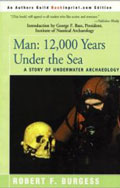
Get This Book From:
Amazon.com
Amazon.co.uk
“Man: 12,000 Years Under the Sea is the dramatic story of underwater archaeology.
The work looks back at Greek divers’ discovery of ancient statues in the sea, and covers the history of marine archaeology to the present, including the recovery of Ice Age Man’s 12,000-year-old remains from the bottom of Florida springs.
Burgess writes from his experience for an assured exciting read.
In Man: 12,000 Years Under the Sea Robert Burgess gives us a peak at . . . the work done by sponge divers, treasure hunters and underwater archaeologists.
The excitement and hazard of underwater exploration is so clearly described that I was tempted to get a diving suit to join them. This book is more than intriguing, it is a necessity.”
“Eden in the East: The Drowned Continent of Southeast Asia”
by
Stephen Oppenheimer

Get This Book From:
Amazon.com
Amazon.co.uk
“A book that completetly changes the established and conventional view of prehistory by relocating the Lost Eden – the world’s 1st civilization – to S.E. Asia.
At the end of the Ice Age, SouthEast Asia formed a continent twice the size of India, which included Indochina, Malaysia, Indonesia and Borneo.
The South China Sea, the Gulf of Thailand and the Java sea, which were all dry, formed the connecting parts of the continent.
Geologically, this half sunken continent is the Shunda shelf or Sundaland.
He produces evidence from ethnography, archaeology, oceanography, from creation stories, myths and sagas and from linguistics and DNA analysis, to argue that this founder civilization was destroyed by a catastrophic flood, caused by a rapid rise in the sea level at the end of the last ice age.”
“Atlantis Pyramids Floods”
by
Dennis Brooks
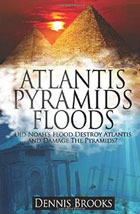
“Researchers have many questions regarding both the Great Flood and Atlantis: Which areas were flooded? Where did the flood waters come from? What caused the flooding? How was Atlantis destroyed? Where was Atlantis located?
The short answers: Noah’s Flood was caused by tsunami waves that covered all the costal areas around the Atlantic Ocean.
They also flooded the Mediterranean Basin temporarily raising sea level above 600 feet.
The tsunamis were created by comet fragments that landed in the ocean and within the Americas.
Some estimations claim that over 500,000 comet fragments hit the Americas. The craters are called Carolina Bays.
These craters are concentrated along the Atlantic seaboard within the coastal states of Delaware, Maryland, New Jersey, North Carolina, South Carolina, Virginia, Georgia, Florida, and as far away as Nebraska.
Atlantis was part of Plato’s boundless continent, North America. Plato: ‘. . .and the surrounding land may be most truly called a boundless continent.”
Get This Book From:
Amazon.com
Amazon.co.uk
“Voyages of the
Pyramid Builders”
by
Dr Robert M. Schoch

Get This Book From:
Amazon.com
Amazon.co.uk
“Is it a mere coincidence that pyramids are found across our globe? Did cultures ranging across vast spaces in geography and time, such as the ancient Egyptians; early Buddhists; the Maya, Inca, Toltec, and Aztec civilizations of the Americas; the Celts of the British Isles; and even the Mississippi Indians of pre-Columbian Illinois, simply dream the same dreams and envision the same structures?
“Underworld: Flooded
Kingdoms of the
Ice Age”
by
Graham Hancock

Get This Book From:
Amazon.com
Amazon.co.uk
“From Graham Hancock, bestselling author of Fingerprints of the Gods, comes a mesmerizing book that takes us on a captivating underwater voyage to find the ruins of a lost civilization that’s been hidden for thousands of years beneath the world’s oceans. While Graham Hancock is no stranger to stirring up heated controversy among scientific experts, his books and television documentaries have intrigued millions of people around the world and influenced many to rethink their views about the origins of human civilization.
Now he returns with an explosive new work of archaeological detection. In Underworld, Hancock continues his remarkable quest underwater, where, according to almost a thousand ancient myths from every part of the globe, the ruins of a lost civilization, obliterated in a universal flood, are to be found.”
…
exclusive
…
October 2002
Morien Institute
illustrated interview with
Professor Masaaki Kimura
of the University of the Ruykyus,
Okinawa, Japan, regarding
the discovery of:
“Megalithic structures found underwater off the coast of
Yonaguni-jima, Japan”
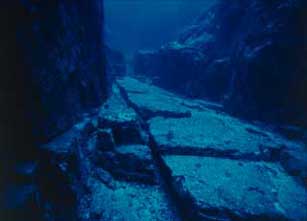
…
exclusive
…
June 2002
Morien Institute
illustrated interview with
Dr Paul Weinzweig
of Advanced Digital Communications,
Havana, Cuba, regarding
the discovery of:
“Megalithic urban ruins discovered off the coast of Cuba”
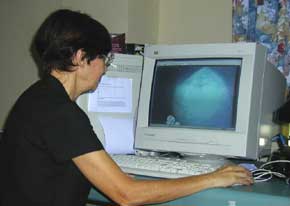
“Maritime Archaeology:
A Technical Handbook”
by
Jeremy Green
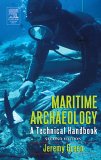
Get This Book From:
Amazon.com
Amazon.co.uk
“Jeremy Green’s systematic overview of maritime archaeology offers a step-by-step description of this fast-growing field.
With new information about the use of computers and Global Positioning Systems, the second edition of this handbook shows how to extract as much information as possible from a site, how to record and document the data, and how to act ethically and responsibly with the artifacts.
Treating underwater archaeology as a discipline, the book demonstrates how archaeologists, ‘looters’, academics, and governments interact and how the market for archaeological artifacts creates obstacles and opportunities for these groups.
Well illustrated and comprehensive in its approach to the subject, this book provides an essential foundation for everybody interested in underwater environments, submerged land structures, and conditions created by sea level changes.”
|